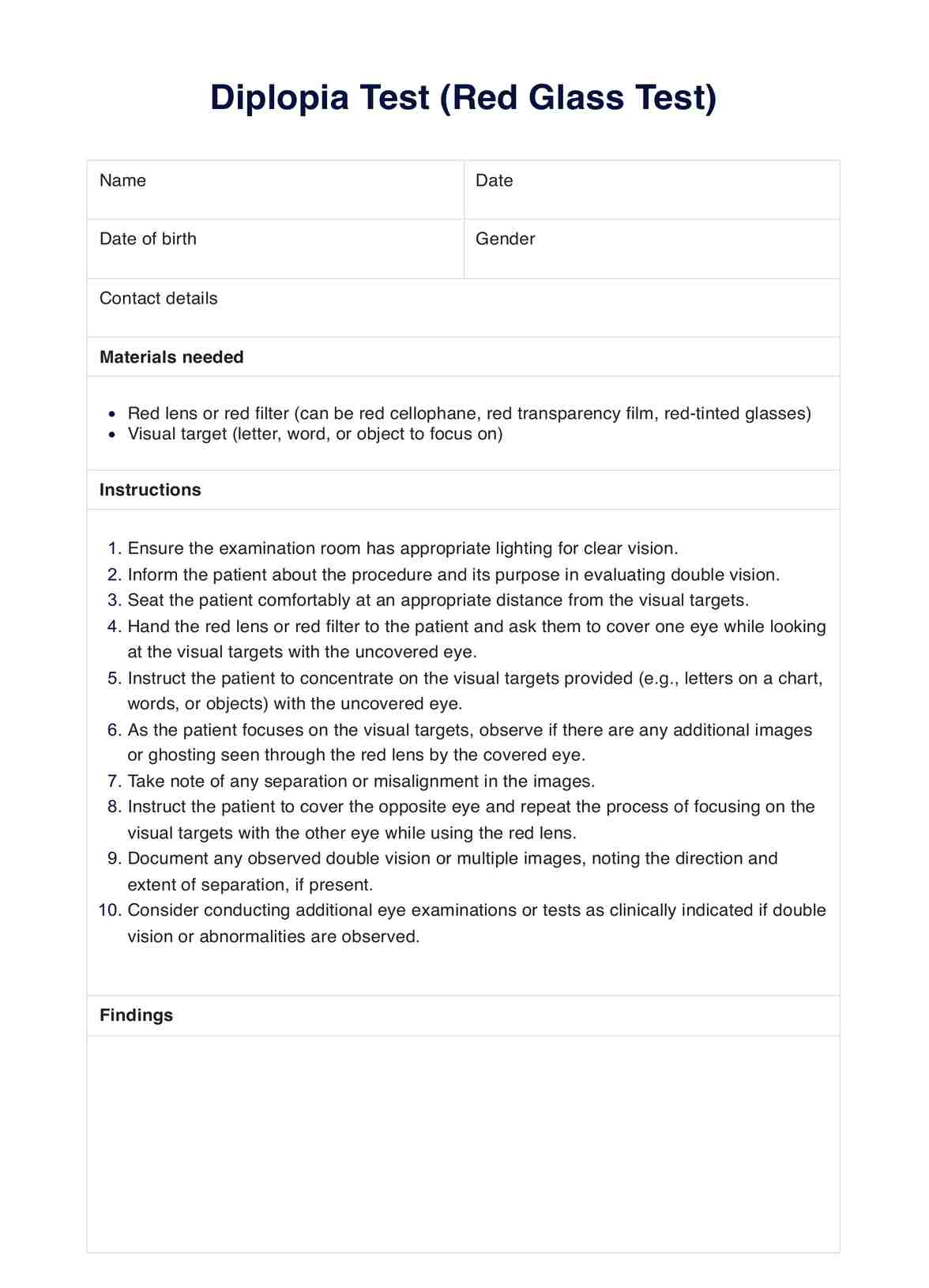Tests for diplopia include the red glass test, visual acuity test, cover test, cranial nerve examination, imaging studies, and other physical exams.

Diplopia Test
Learn how to conduct the Red Glass or Diplopia Test. Download a free PDF template and example in this guide.
Use Template
Diplopia Test Template
Commonly asked questions
The most common cause of diplopia is strabismus or ocular misalignment.
MRI or CT scans are the best diagnostic modalities for diplopia as they provide detailed images of the brain and eye structures.
EHR and practice management software
Get started for free
*No credit card required
Free
$0/usd
Unlimited clients
Telehealth
1GB of storage
Client portal text
Automated billing and online payments











